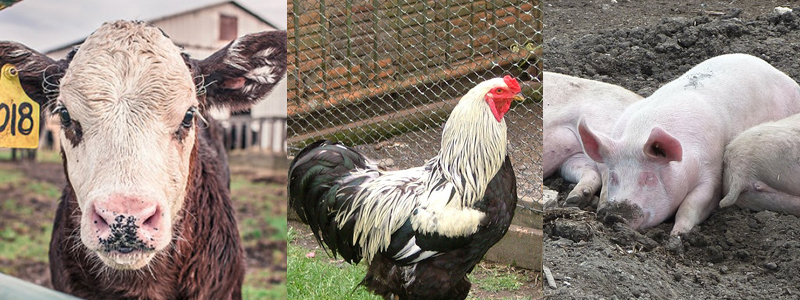Veterinarians will take on a greater role in food safety starting in January. In an effort to promote judicious use of medically-important antibiotics in feed or water for food-producing animals, antibiotic label changes are going into effect at the beginning of the year. With these changes, the use of feed grade and water soluble antimicrobials will no longer be permissible for production purposes. Additionally, veterinarians will have to oversee the purchase of feed containing certain antibiotics by issuing a Veterinary Feed Directive, or VFD, to animal owners. The VFD will be required for feed grade antibiotics, while water soluble antibiotics will require a prescription. In order to issue either one, veterinarians must have a relationship with the veterinary patient and client. In other words, you need to visit the farm and have seen the animals, and have a familiarity with the operation requesting the VFD.
Dr. Craig Payne, director of veterinary extension and continuing education at the University of Missouri’s College of Veterinary Medicine, says the requirement could impact any veterinarian, not just those in mixed or food animal practice. “The requirement for a VFD and prescription applies regardless of what species the antibiotics are used in,” he says. “For example, I have received several inquiries from companion animal practitioners who have clients with backyard bee hives. Their clients use oxytetracycline to prevent a particular disease, and the clients are wondering if these changes will impact them. The answer is yes, because tetracyclines are considered medically important antimicrobials by the FDA.” Others on the list include penicillins, macrolides, lincosamides, streptogrammins, aminoglycosides, and sulfonamides.
Richard Antweiler, executive director of the Missouri Veterinary Medical Association (MVMA), says the new rule is a double-edged sword for veterinarians. “They might have some clients come in they haven’t seen before and maybe build some business,” he says, “but, a lot of clients are going to come in never having seen a veterinarian before and demand that this VFD be signed.” Antweiler also points to the additional recordkeeping veterinarians will have to perform under the directive, as veterinarians will have to fill out a form specifying the drug being issued and the reason for issuing it. The MVMA will have a mobile app in place by December to simplify the process.
Those interested in learning more about the Veterinary Feed Directive and its impact on practice operations can access an online webinar through the MVMA website starting in November. Kansas State University has put together a series of online modules as well, covering frequently asked questions (www.beefcattleinstitute.org/veterinary-feed-directive). The Department of Agriculture is also holding a series of presentations about the directive. Information is available on the events page at www.movma.org. For more information about the VFD, visit http://www.fda.gov/AnimalVeterinary/DevelopmentApprovalProcess/ucm071807.htm.










